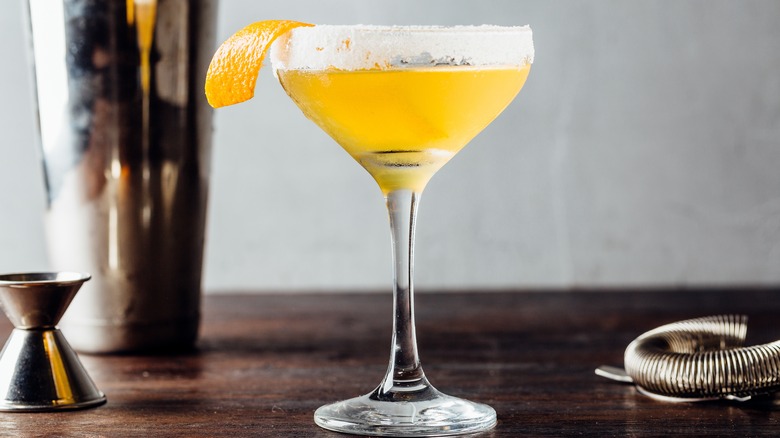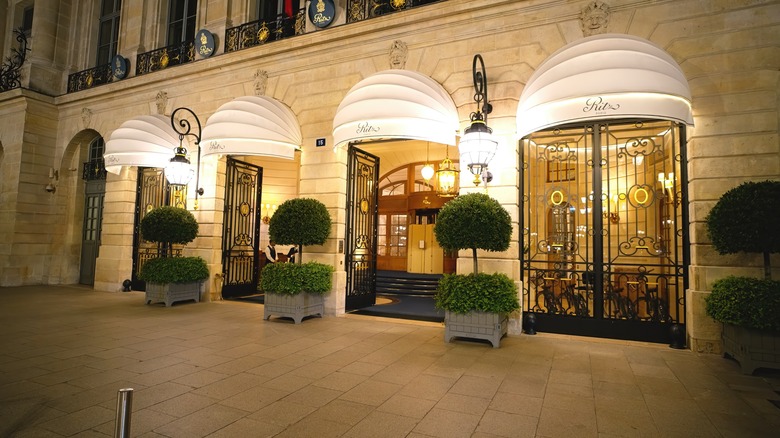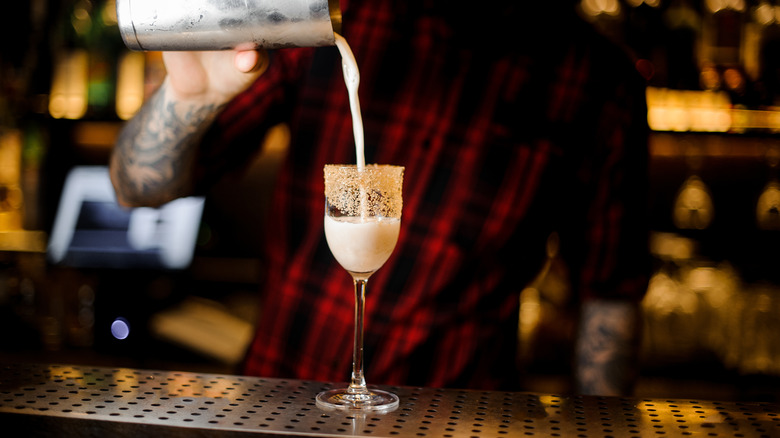The Mysterious Origins Of The Sidecar Cocktail
We may receive a commission on purchases made from links.
The sidecar is a legendary cocktail developed in the 1910s in Europe. It's also the name for a bike attachment, but it's up for debate whether those extra wheels inspired the drink's name or not. The earliest recipes include distilled grape brandy, orange liqueur, and lemon juice. Cognac, a type of aged brandy made in the Cognac region of France, has also come into favor. If you're thinking about making the drink at home, Cointreau is a popular choice, though there are many other suitable orange liqueurs on the market, like Grand Marnier and Triple Sec.
The origin stories of cocktails are often muddled and winding and the complex and citrusy sidecar is no different. Mixologist Kevin Kos of "Cocktail Time with Kevin Kos" asserts that, besides the motorcycle theory, another possible basis for the drink's title is that it might have referred to the sugared rim that was sometimes only on one side of the glass. Three establishments have claimed credit for inventing the sidecar, the Ritz Paris hotel, the Buck's Club in London, and Harry's New York Bar in Paris – and they all coincidentally have very similar stories for the naming of the cocktail.
The various claims on the sidecar
It seems that a soldier may have been instrumental to the sidecar's invention. As one story goes, around the time World War I came to an end, a serviceperson who frequented these bars would always arrive by motorcycle sidecar and his transportation method of choice — and his preferred tipple — inspired the name. In the case of the Ritz Paris, Gourmet claims that English and American soldiers who grabbed a couple of bottles frantically during an air raid wound up combining the booze in equal parts with lemon juice, shaking the concoction with cracked ice before straining it, resulting in the sidecar.
Harry MacElhone, the bartender at Harry's New York Bar in Paris, published a recipe for the sidecar in a book titled "Harry's ABC of Mixing Cocktails," which was first printed in 1919. Though MacElhone claimed he invented the drink in later editions, in 1922, he credited the cocktail's creation to a former co-worker, Pat MacGarry, of the Buck's Club in London.
If you're interested in trying the original Ritz Sidecar, they still serve it at the upscale Bar Hemingway housed within the Ritz Paris. It's made with a very old cognac, named after the Ritz and bottled by Rémy Martin, that predates the European phylloxera infestation that was first identified in 1863 and decimated vineyards for several decades. The only catch, aside from traveling to Paris, is that it will set you back around $1,800!
New Orleans may have played a role in the sidecar's conception
There's a cocktail called the brandy crusta that was developed in the 1850s by Joseph Santini at City Exchange, a bar in New Orleans, about 50 years before the sidecar came on the scene. There are many similarities between the brandy crusta and the sidecar — there's sugar on the rim, orange liqueur, and lemon juice, but the brandy crusta usually has bitters and maraschino liqueur.
The brandy crusta is often credited as the parent of the sidecar. The use of sugar on the rim was groundbreaking in itself, but the brandy crusta also introduced lemon as a cocktail ingredient. "It lead to the daisy, which lead to the margarita, then the sidecar and, eventually, the cosmopolitan," said New Orleans bartender Chris Hannah in an interview with The Local Palate. We may never know the whole story of the sidecar, but it's an important drink that took the cocktail world by storm and has stood the test of time. If you have some cognac you'd like to use for a cocktail, try shaking one up.


